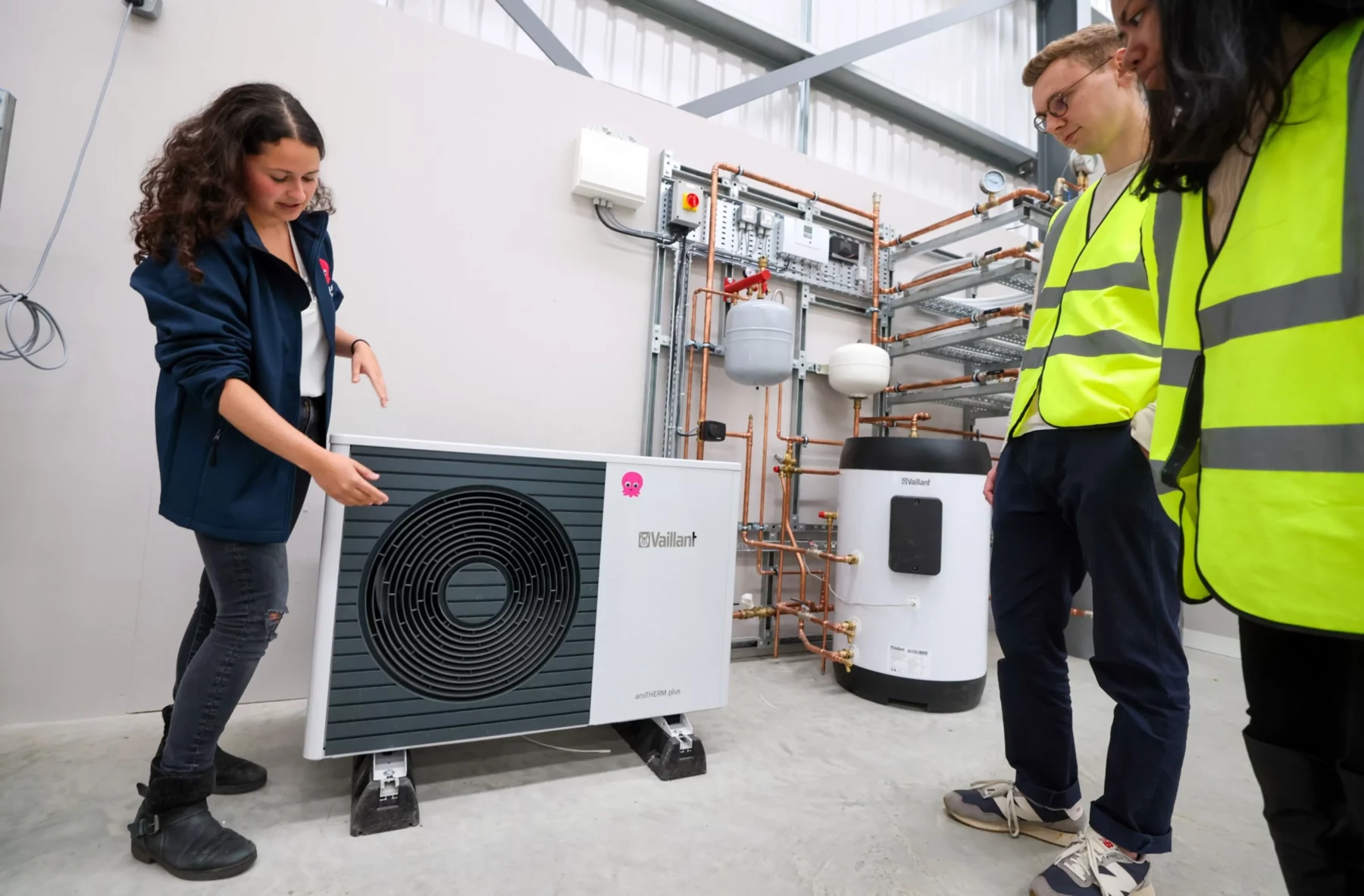(Bloomberg) —
Tesla’s investor day on Wednesday didn’t offer fans any new cars. Instead, Elon Musk and his executives teased a new area Tesla may look at entering — home heating.
Heat pumps, which are more efficient than traditional heaters and can help reduce planet-warming emissions, have attracted increasing attention since Russia’s war in Ukraine set off a global energy crisis. They’re also the target of new subsidies from governments looking for ways to mitigate global warming.
In many ways, home heat pumps are an obvious next move for Tesla, which already makes electric cars that use heat-pump technology, as well as solar panels and home batteries. But what exactly is a heat pump, how does it work and why is Musk talking about it now?
What is a heat pump?
A heat pump is an electric way of heating a home or other space (like a car), but doesn’t work in the same way as traditional car or home electric heaters. Heat pumps move heat around instead of creating it, which is more efficient and less energy-intensive. That makes heat pumps one important solution in efforts to heat the world’s buildings without burning fossil fuels.
How do heat pumps work?
Rather than creating heat by forcing electricity through wire and making it hot, heat pumps extract heat that’s already in the air, ground or water outside, transferring it to a refrigerant. This is then compressed and released to heat an indoor space.
Some heat pumps work by heating water, which is then pumped into radiators or underfloor heating, while others blow hot air directly into the space. This can be done even in low temperatures; heat pumps are used for almost a third of space heating in Sweden, for example, where temperatures are cold in winter.
Heat pumps are considered better than traditional electric heaters because they’re more efficient. Whereas a typical electric heater is 100% efficient — making one unit of heat for one unit of power, heat pumps offer two or three times the efficiency. The best are five times more efficient under perfect conditions.
How much do heat pumps cost?
That depends on where you are and whether you qualify for any government discounts. Different countries now have incentive schemes to encourage adoption.
In the US, the cost can vary from $3,500 to $20,000. The average installation cost is $14,000, according to a survey carried out by Carbon Switch. The government also offers incentives for installation that depend on income.
In Sweden, the average cost is about $9,000 to $14,000, depending on the type of pump. In the UK, an air-source heat pump is likely to cost between £7,000 ($8,400) and £12,000, though in some cases utilities say they can match the cost of a gas boiler with a government grant.
Where can you find heat pumps now?
One place heat pumps are already in use is Tesla cars. The company uses them to heat all four of its current models, and has said they boost range — though there have been teething problems.
Heat pumps are also already in a lot of buildings; around 10% of space heating worldwide was provided by heat pumps in 2021. The fastest-growing market is China, but there is already particularly high usage in northern Europe and growth in eastern Europe, where uptake has been encouraged by concerns about reliance on Russian fossil fuels.
An air conditioner is a type of heat pump — it just works in reverse, extracting heat from inside a building and dumping it outside. And some heat pumps work both ways, heating or cooling depending on the weather and needs of the building’s occupants.
How easy are heat pumps to install?
Retrofitting a heat pump onto a home previously heated via other means does require some thought, and the specifics also depend on the type of heat pump. Air-source heat pumps have a unit outside that needs a space roughly the size of a bicycle. Installing a ground-source heat pump is a bit more work-intensive and requires digging boreholes or trenches. It’s cheaper to run, though.
Heat pumps work at a lower temperature than gas or oil boilers. They’re designed to keep an ambient temperature over a long period of time, rather than providing a shorter burst of heat, as boilers often do.
Heat pumps work more efficiently if they can run at a low temperature and project heat into a room from a larger surface area. They also work better if there is less heat loss from the building, so larger radiators or underfloor heating and insulation are helpful.
What are the challenges?
As with any new technology, there are hiccups, including a shortage of expert engineers and components. Legacy systems like gas networks and the easier availability of installers make it easier and cheaper for householders to turn to a like-for-like replacement if their boiler breaks down. Poor-quality housing stock that isn’t well insulated is also less suitable for heat pumps, so retrofitting can sometimes be difficult.
Heat pump adoption requires some behavioral adjustment on the part of the householder, too. People accustomed to a fossil fuel boiler might be used to pushing a thermostat up to provide a blast of heat for a couple of hours, but heat pumps are designed to run at a low level almost all the time.
Will a heat pump save me money?
Possibly, as long as it runs efficiently and electricity costs aren’t prohibitively high. Even though an installation can be more expensive upfront, the rising cost of fossil fuels means running a heat pump is likely to be cheaper in the long run. They last longer, too: 20 years, compared to an average of 10 to 15 years for a gas boiler.
Will getting a heat pump help save the planet?
Yes — electricity grids are increasingly based at least partly on renewable energy, so are less carbon-intensive than burning fossil fuels inside your home. In fact, electric heat pumps have the potential to reduce global carbon dioxide emissions by at least 500 million metric tons in 2030, according to the IEA.
To contact the author of this story:
Olivia Rudgard in London at orudgard@bloomberg.net
© 2023 Bloomberg L.P.
Apeel is making it much easier to know when to eat an avocado. Avocados are arguably one of the tougher fruits to predict the best time to cut open and use. Sometimes it’s far too firm or just right — and sometimes, a softer, blackened one is perfect, or other times it is already too ripe to eat.
The company has invented a new sensor that cuts out the guesswork and tells you exactly when an avocado is ready to eat. It cuts food waste — a $218 billion problem worldwide — by helping stores properly label the fruit by ripen date.





